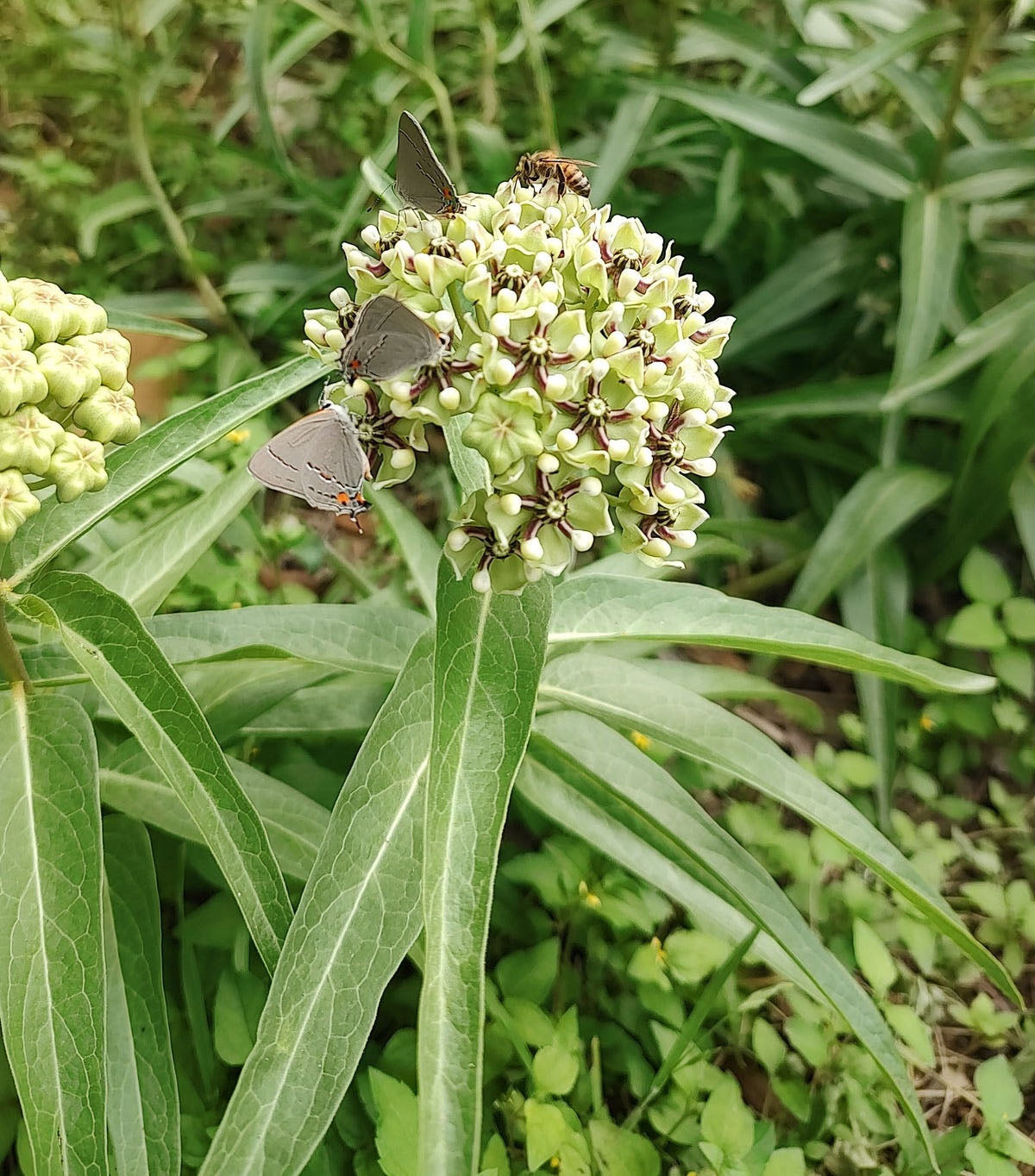1
/
of
5
Asclepias asperula --Antelopehorn Milkweed--
Asclepias asperula --Antelopehorn Milkweed--
Couldn't load pickup availability
There are two primary native asclepias to Travis and surrounding counties. With little variation, they are Antelopehorn (asperula) & Green Antelopehorn (viridis). A RARE monarch must! These butterflies reproduce in late summer and early fall, so cut plants back well in July to stimulate them to produce the fresh young growth the caterpillars need. Milkweed are named for the sticky white sap within their stems, which can be a skin irritant. Antelopehorn refers to the shape of the seedpod, which splits open and releases fluffy seeds that float away. Plant native milkweed seedlings in ground asap. Water in thoroughly and allow to dry between watering; repeat for approximately 2 months. Preferably planted into native soil or a well drained mixed soil. Native Asclepias has a heck of a time trying to survive in a pot. THEY'RE WILD! In our experience, planting them in the live Earth, gives them the best advantage to flourish. Will they bloom right away? Not likely. Will they "disappear", giving the impression that they gave up? Probably. But that's the beauty of this native pollinator, IT'S ALL IN THE ROOTS BABY. Time and again, a customer will write that their native milkweed died, only to write back later with joyous proclamations of whole swaths or patches, the following spring. It's a miracle of the plant world, and we are excited to help you harbor this experience. Just think ‘Sandy clay, on the side of the road growing beneath towering native grasses’. That’s where native baby seedlings it thrive.
Tags: All perennials, Archived, Attracts pollinators, Milkweed, Nd, Texas native
Share








